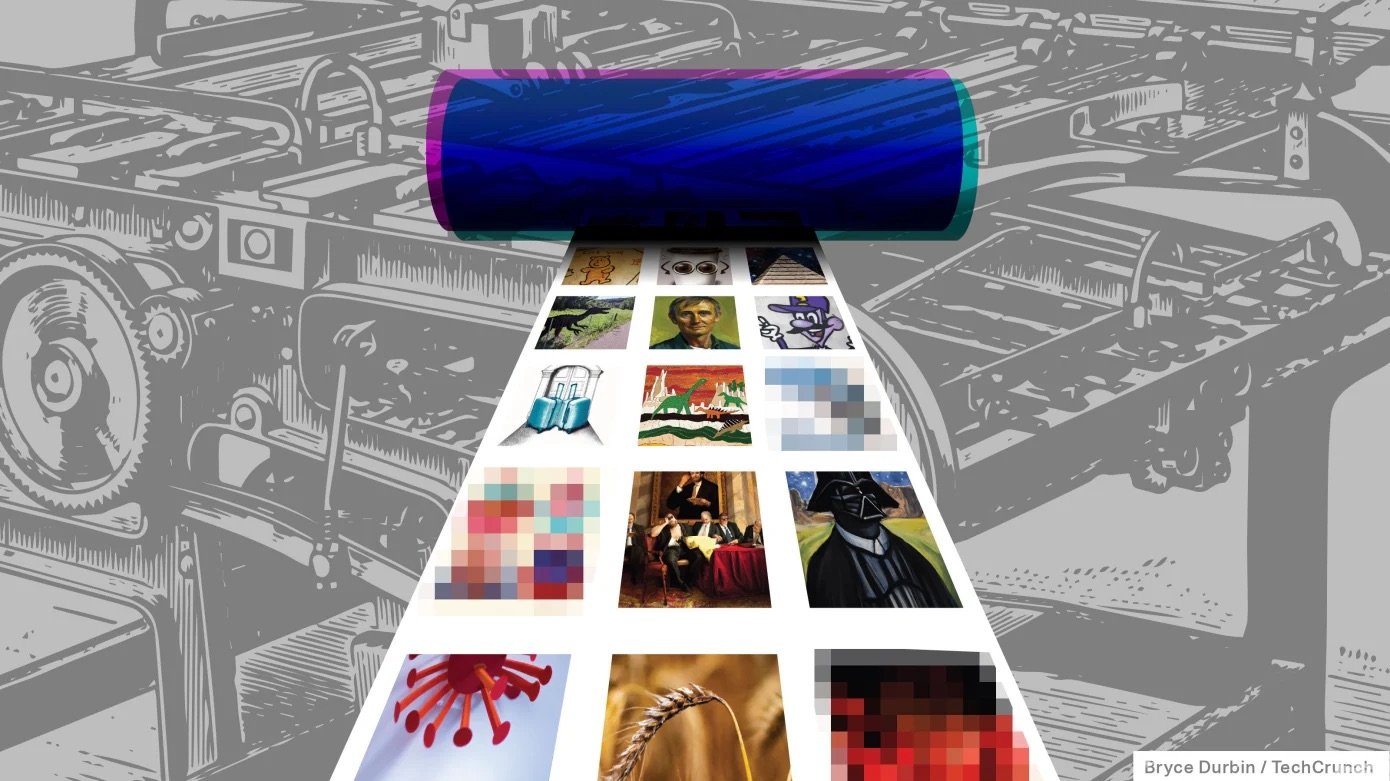Image-generating AI Can Copy and Paste from Training Data, Raising IP Concerns
A new study by researchers at Maryland and NYU shows Stable Diffusion and like models replicate data.
Image-generating AI models like DALL-E 2 and Stable Diffusion can — and do — replicate aspects of images from their training data, researchers show in a new study, raising concerns as these services enter wide commercial use.
Co-authored by scientists at the University of Maryland and New York University, the research identifies cases where image-generating models, including Stable Diffusion, “copy” from the public internet data — including copyrighted images — on which they were trained.
To be clear, the study hasn’t been peer reviewed yet. A researcher in the field, who asked not to be identified by name, shared high-level thoughts with TechCrunch via email.
“Even though diffusion models such as Stable Diffusion produce beautiful images, and often ones that appear highly original and custom tailored to a particular text prompt, we show that these images may actually be copied from their training data, either wholesale or by copying only parts of training images,” the researcher said. “Companies generating data with diffusion models may need to reconsider wherever intellectual property laws are concerned. It is virtually impossible to verify that any particular image generated by Stable Diffusion is novel and not stolen from the training set.”
Images from noise
State-of-the-art image-generating systems like Stable Diffusion are what’s known as “diffusion” models. Diffusion models learn to create images from text prompts (e.g., “a sketch of a bird perched on a windowsill”) as they work their way through massive training data sets. The models — trained to “re-create” images as opposed to drawing them from scratch — start with pure noise and refine an image over time to make it incrementally closer to the text prompt.
It’s not very intuitive tech. But it’s exceptionally good at generating artwork in virtually any style, including photorealistic art. Indeed, diffusion has enabled a host of attention-grabbing applications, from synthetic avatars in Lensa to art tools in Canva. DeviantArt recently released a Stable Diffusion–powered app for creating custom artwork, while Microsoft is tapping DALL-E 2 to power a generative art feature coming to Microsoft Edge.
To be clear, it wasn’t a mystery that diffusion models replicate elements of training images, which are usually scraped indiscriminately from the web. Character designers like Hollie Mengert and Greg Rutkowski, whose classical painting styles and fantasy landscapes have become one of the most commonly used prompts in Stable Diffusion, have decried what they see as poor AI imitations that are nevertheless tied to their names.
But it’s been difficult to empirically measure how often copying occurs, given diffusion systems are trained on upward of billions of images that come from a range of different sources.
To study Stable Diffusion, the researchers’ approach was to randomly sample 9,000 images from a data set called LAION-Aesthetics — one of the image sets used to train Stable Diffusion — and the images’ corresponding captions. LAION-Aesthetics contains images paired with text captions, including images of copyrighted characters (e.g., Luke Skywalker and Batman), images from IP-protected sources such as iStock, and art from living artists such as Phil Koch and Steve Henderson.
The researchers fed the captions to Stable Diffusion to have the system create new images. They then wrote new captions for each, attempting to have Stable Diffusion replicate the synthetic images. After comparing using an automated similarity-spotting tool, the two sets of generated images — the set created from the LAION-Aesthetics captions and the set from the researchers’ prompts — the researchers say they found a “significant amount of copying” by Stable Diffusion across the results, including backgrounds and objects recycled from the training set.
One prompt — “Canvas Wall Art Print” — consistently yielded images showing a particular sofa, a comparatively mundane example of the way diffusion models associate semantic concepts with images. Others containing the words “painting” and “wave” generated images with waves resembling those in the painting “The Great Wave off Kanagawa” by Katsushika Hokusai.
Across all their experiments, Stable Diffusion “copied” from the training data set roughly 1.88% of the time, the researchers say. That might not sound like much, but considering the reach of diffusion systems today — Stable Diffusion had created over 170 million images as of October, according to one ballpark estimate — it’s tough to ignore.
“Artists and content creators should absolutely be alarmed that others may be profiting off their content without consent,” the researcher said.
Read the rest in Tech Crunch+


